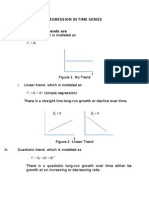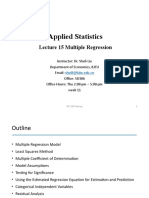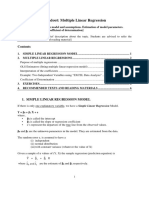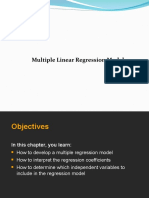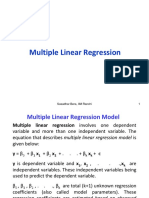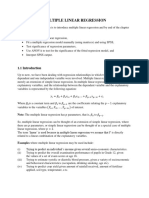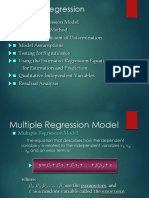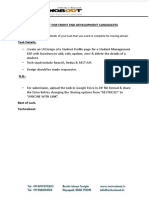0% found this document useful (0 votes)
173 views73 pagesMultiple Linear Regression
This document introduces multiple linear regression models and discusses estimating regression coefficients, testing the significance of individual coefficients and the overall model fit, and calculating partial regression coefficients and multiple correlation coefficients from correlation coefficients. Examples are provided to demonstrate calculating regression coefficients using different methods and testing the overall significance of regression models.
Uploaded by
Ruchika MotwaniCopyright
© © All Rights Reserved
We take content rights seriously. If you suspect this is your content, claim it here.
Available Formats
Download as PDF, TXT or read online on Scribd
0% found this document useful (0 votes)
173 views73 pagesMultiple Linear Regression
This document introduces multiple linear regression models and discusses estimating regression coefficients, testing the significance of individual coefficients and the overall model fit, and calculating partial regression coefficients and multiple correlation coefficients from correlation coefficients. Examples are provided to demonstrate calculating regression coefficients using different methods and testing the overall significance of regression models.
Uploaded by
Ruchika MotwaniCopyright
© © All Rights Reserved
We take content rights seriously. If you suspect this is your content, claim it here.
Available Formats
Download as PDF, TXT or read online on Scribd
/ 73














